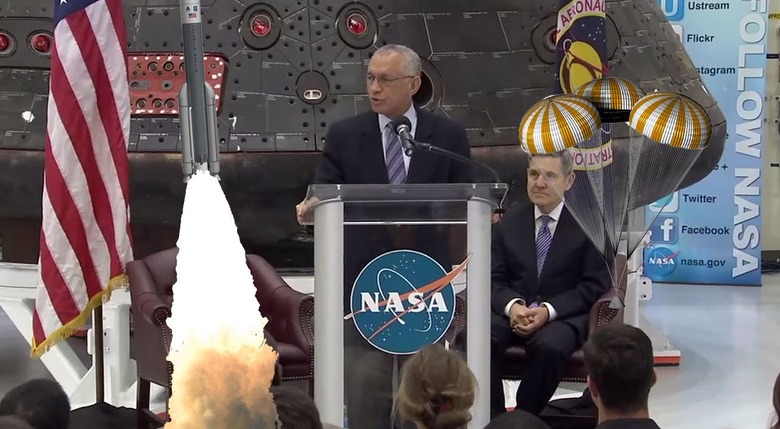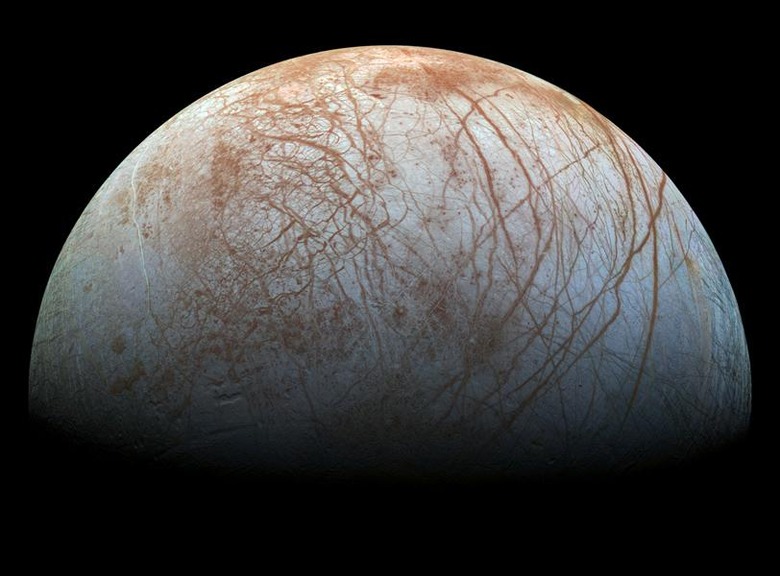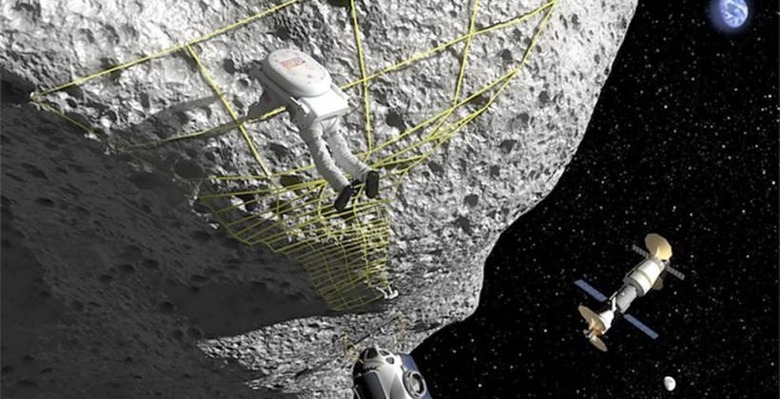NASA White House Budget Up (And Down)
Even with a $500-million-dollar boost compared to last year's total, NASA is only being provided with a potential 0.46% of the Federal Budget. While you'll hear many hearty claps and hoorays at the targets for this budget, this would be another in a long line of drops in percentage-of-total for the federal budget for NASA. The last time NASA received any amount over 1% of the total federal budget was back in 1993. Not that NASA could use the money for anything important like saving humans from an extinction level event, or anything like that.
The good news is that the actual cash NASA will receive is above last year, and the year before that. Obama's administration hasn't been extremely shy about sending money to scientific research, especially in the stars, over the past several years.
UPDATE: Photo above via Erik Axdahl, Special Assistant to the Administrator at NASA Headquarters and Research Aerospace Engineer at NASA Langley Research Center.

NASA Administrator Charles Bolden spoke up this week during the "State of NASA" at the Kennedy Space Center on the advances the organization has made over the past year.
One of the most interesting bits touched on recently was the NASA/Microsoft collaboration with Microsoft HoloLens.
With this program, called OnSight (using HoloLens), astronauts and researchers will be able to explore Mars without physically stepping on the planet's surface – virtually.
NASA has big plans for the funds they receive from the White House over the next 12 months.
"President Obama is proposing a fiscal year 2016 budget of $18.5 billion dollars for NASA," said Bolden. "building on the significant investments the administration has made in America's space program over the past six years."
"That's a half-billion-dollar increase over last year's enacted budget, and it is a clear vote of confidence in you –- the employees of NASA –- and the ambitious exploration program you are executing."

Bolden went on, "Looking to the future, we're planning a mission to explore Jupiter's fascinating moon Europa, selecting instruments this spring and moving toward the next phase of our work."

NASA also made clear that they'd be moving forward with developing solar electric propulsion systems needed for their asteroid redirect mission – again, potentially very important.
